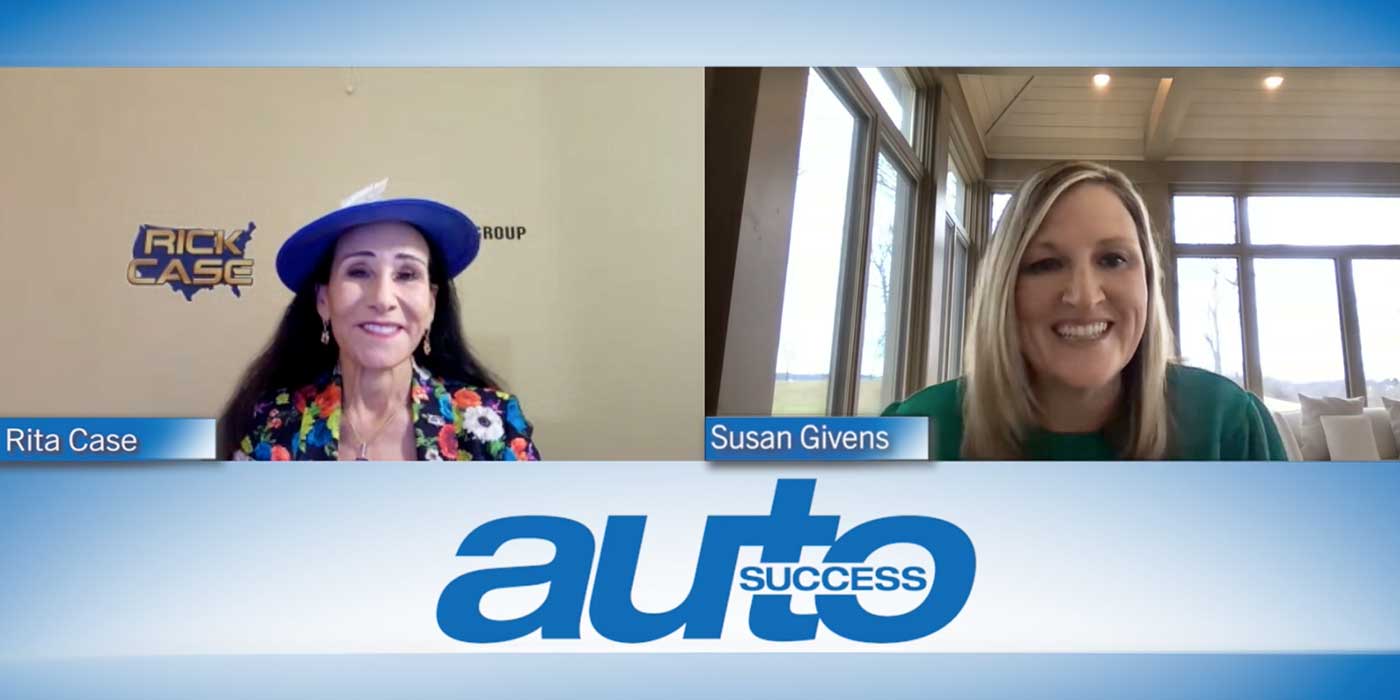Valued and Appreciated Employees are Better Able to Handle Customers
Dealers often say their business would fail without their employees. But do their employees know that?
Sometimes dealers and managers think they are communicating appreciation to their staff, but the sentiment may be falling short.
A 10-year, 200,000-person study from the O.C. Tanner Institute found that 79 percent of employees who quit their jobs cite lack of appreciation as a key reason for leaving. In that same study, 65 percent of employees reported that they weren’t recognized once in the previous year.
“People — employees, managers and owners — want to be appreciated for the work they do,” said Dr. Paul White, psychologist and co-author of the book 5 Languages of Appreciation in the Workplace. “Most people don’t just want to work for money.”
In fact, a global study from the Boston Consulting Group found that of 26 different factors for happiness on the job, appreciation was ranked No. 1. Meanwhile, salary was only No. 8 on the list.
The Benefits of Appreciation
It would be a mistake to think, “employees are getting paid to do their job and therefore they don’t need to be thanked.” Showing appreciation not only makes the workplace a more enjoyable environment, it can also help a business’ bottom line.
“There’s really an economic argument to business leaders — owners, managers — that their business will function better and be more profitable when the employees feel like they’re valued,” Dr. White said. When employees don’t feel appreciated, tardiness increases, people don’t follow policies and procedures, there’s an increase in office conflict and there’s a higher level of turnover, Dr. White shared.
“If you have a key employee who you don’t want to lose, you better make sure they feel appreciated,” he said.
Additionally, customer service suffers when employees lack appreciation. Employees will be grumpier with customers and be less likely to deal with their problems.
“Usually, the employee is irritable and grumpy, and little things bother them more. If you don’t feel like anyone gives a rip about you, you just get worn out and discouraged,” Dr. White explained. “People who don’t feel valued, don’t engage in problem solving because that takes energy. And, if you don’t think it matters, you’re not going to do it. You’ll pass it off to someone else. Or, the employees just do the minimal job, rather than trying to figure out how to best serve the customer.
“When people feel valued and appreciated, they have more of a full emotional tank to deal with the problems and challenges that customers bring,” he continued.
Recognition vs. Appreciation
Business owners sometimes confuse recognizing an employee with showing appreciation, but recognition and appreciation are two different things. Recognition is about performance, and appreciation is about the person. “We talk about recognition being focused on performance,” Dr. White said. “You can appreciate someone who isn’t necessarily a high performer. They’re just a solid middle team member. They’re there every day. They do their job. They’re not the star,” he said. “You can have a star quarterback or running back, but if you don’t have people who block and tackle, you’re not going to do much as a team.”
The differentiation between appreciation and recognition is important, because when businesses acknowledge employees only when they’re performing well, people start to resent it.
“If we hear things only when we are meeting these goals, then the message is you aren’t important as a person. You’re just important as a productivity unit,” Dr. White said.
5 Languages of Appreciation
Discovering how an employee would like to be appreciated could be a bit awkward.
“It’s not a common topic of conversation. We say, ‘Hey, I want to be sure and show you appreciation the right way, but how do I do that?’ That feels sort of weird,” Dr. White said. “Most people can’t give you any ideas because they don’t think about it that way.”
Understanding the importance of showing appreciation to employees in a way they prefer, the 5 Languages of Appreciation in the Workplace was born. Working with Dr. Gary Chapman, Dr. White adapted principals from the book, The 5 Love Languages, and applied them to the workplace.
The 5 Languages of Appreciation are:
1. Words of Affirmation
2. Acts of Service
3. Receiving Gifts
4. Quality Time
5. Physical Touch
To help individuals identify which language they speak, the Motivating By Appreciation (MBA) Inventory was created. The assessment tool helps individuals learn which language they prefer to be shown appreciation, not how to discover someone else’s language.
Having a group take the assessment and work with a trained consultant will help individuals to speak the languages of others and encourage each other, not just as manager-to-employee but also co-worker to co-worker.
“One of the things we’ve found when working with organizations and businesses is knowing a person’s language of appreciation is helpful. There are different actions that are important within the language that are important to know, too,” Dr. White shared.
There are four core principles of the 5 Languages of Appreciation:
1. There are different methods to communicate appreciation and encouragement.
2. Individuals have preferred ways they want to be shown appreciation.
3. The most effective form of appreciation is expressed in the language most valued by the receiver.
4. Appreciation can miss the mark if communicated in a way that’s not valued by the recipient.
Dr. White advises finding ways to show appreciation that fit your company’s culture and situation.
“Basically, you’ve got to look at the setting and see what’s realistic. Quality time may not be that you’re going to hang out while they’re changing tires,” he said. “Go hang out with them during break or over lunch.” He also emphasized that showing group appreciation is good, but businesses should try individualized appreciation when possible.
“Specific feedback about what a person has done is far more impactful for an individual than a group complement because it’s about you,” Dr. White explained. “We know people feel appreciated when the message is individual and personalized.”
Not every business may feel comfortable having their team take the MBA Inventory and that’s OK, Dr. White said. Individuals can utilize principals of the 5 Languages without the whole company buying in.
The 5 Languages of Appreciation in the Workplace book provides anyone with the tools they need to show appreciation and encouragement to one another in the workplace.
“You can start and use the concepts, regardless of your position in the organization,” he added.
Remembering to show appreciation isn’t always easy. It takes effort. Here are just a few examples of ways you can show appreciation to your employees:
• Host company-wide events such as family picnics, staff bowling events and holiday parties.
• Call attention to an employee’s extra effort during a staff meeting. Post positive customer feedback where everyone can see it.
• Provide lunch for the staff when the day gets extra busy.
• Hand out recognition plaques for years of service (given out on anniversary intervals).
• Give away tangible items, such as tickets to sporting events or concerts, amusement park passes and gift cards.
Kristen Criswell














